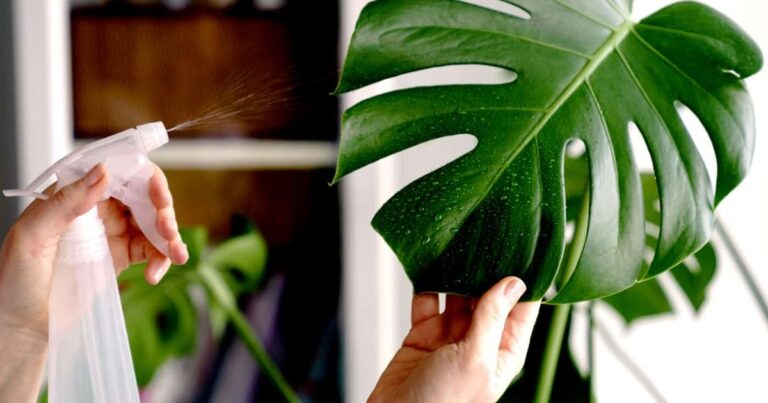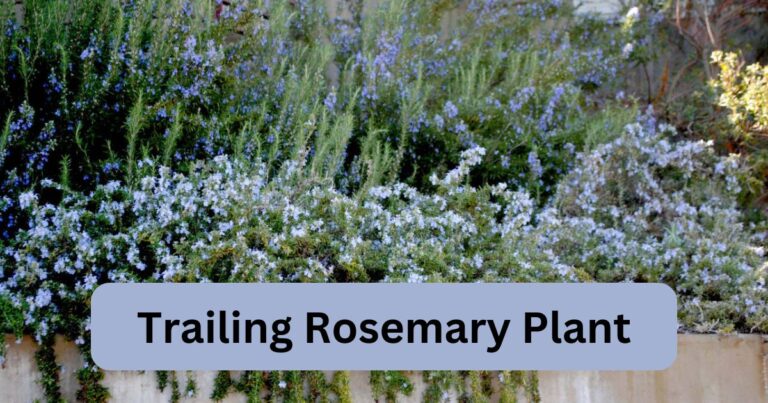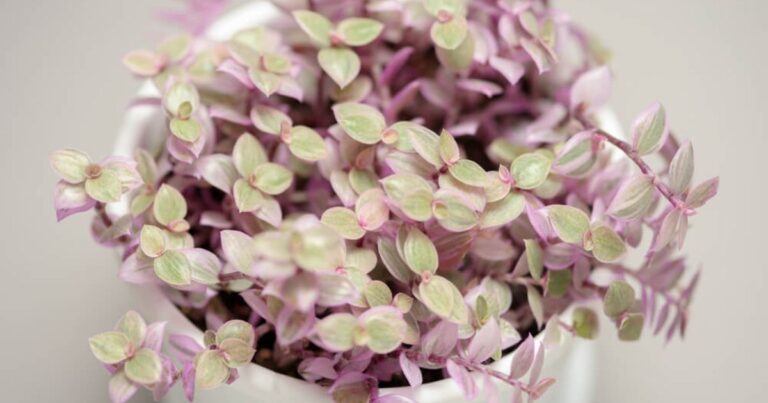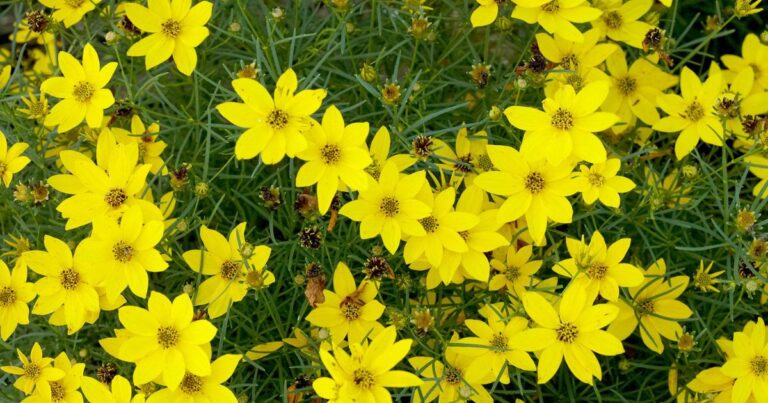10 Best Rock Plants For Garden
Rock gardens in particular offer a unique blend of rugged beauty and low maintenance charm, allowing nature’s textures and colours to shine through with minimal fuss. In this article, I will cover ten of the best rock plants that not only endure challenging conditions but also enhance your garden’s aesthetic appeal.
From resilient succulents that sparkle under the sun to delicate perennials that bloom with surprising vigour, these choices will inspire you to create a captivating outdoor space.
Bugleweed (Ajuga Reptans And A spp)
Bugleweed, encompassing species like (Ajuga reptans) and its various cultivars, is a versatile ground cover that thrives across a broad spectrum of environments, making it suitable for growing zones 3 to 10. You are looking to fill a sunny garden bed or soften the edges of a shaded woodland area, bugleweed adapts beautifully.

With its dense mat forming habit, it achieves heights between 3 to 12 inches while dynamically spreading up to 24 inches wide, perfect for suppressing weeds and adding texture. Famed for its striking late spring to early summer blooms, Ajuga captivates with spikes of blue-purple flowers that attract pollinators while creating eye-catching contrasts against its lush green foliage.
Blue Fescue (Festuca Glauca)
Blue fescue (Festuca glauca) is a standout choice for gardeners seeking to add texture and vibrant colour to their landscapes. Renowned for its striking blue-grey foliage, this perennial grass thrives in USDA zones 4 to 8, making it an ideal option for a wide range of climates.
Its compact clumping habit, reaching heights of 10 to 12 inches while spreading 24 to 28 inches wide, allows it to gracefully fill both large garden beds and smaller spaces alike. In late spring through summer, delicate flower spikes emerge above the foliage, providing a subtle yet charming accent that can attract pollinators like bees.
Candytuft (Iberis Sempervirens)
Candytuft (Iberis sempervirens) showcases a delightful transformation each spring, as its vibrant clusters of white blooms create a stunning tapestry against lush green foliage. Thriving in USDA zones 3 to 9, this perennial reliably returns year after year, making it an ideal candidate for gardeners looking to add consistency and charm to their landscapes.

The dense growth habit offers excellent ground cover, it suppresses weeds while attracting butterflies and beneficial pollinators during bloom time from mid to late spring. With a mature height of 6 to 12 inches and spread of 12 to 24 inches wide, candytuft perfectly complements both formal and informal settings making it an essential addition for any attentive gardener seeking enduring allure through every season.
Columbine (Aquilegia Spp)
Columbine Flower plants, belonging to the genus Aquilegia, are truly a garden delight, showcasing an impressive variety of colours and shapes that can enliven any landscape. Typically thriving in Zones 3 to 9, these perennials adapt gracefully to a range of environments with their ability to flourish in full sun as well as partial shade.
Their upright or clump-forming habit allows them to serve as stunning focal points or charming companions among other flora. With heights ranging from 8 inches up to an impressive 36 inches and spreads between 8 and 24 inches wide, columbines can fit seamlessly into diverse garden layouts.
Cotoneaster (Cotoneaster spp)
COTONEASTER (Cotoneaster spp) exhibits a remarkable versatility that makes it a must-have in many landscapes. Ranging in height from 1 to 15 feet and with spreads up to 15 feet wide, this shrub can adapt its habit based on space and design needs, flourishing in both upright forms ideal for privacy hedges and spreading varieties perfect for ground cover.

With hardiness zones spanning 3 to 8, gardeners across a broad range of climates can enjoy their lush foliage and vibrant seasonal transitions.
Hen And Chicks (Sempervivum spp)
Hen and chicks (Sempervivum spp) are truly remarkable succulents that bring a touch of resilience and beauty to any garden. Thriving in Zones 4 to 10, these hardy plants prefer full sun to partial shade, making them an ideal choice for diverse landscapes.
What sets hen and chicks apart is their unique adaptability; they flourish in drought-like conditions yet can tolerate fleeting moisture. The plants typically reach heights of 6 to 12 inches while spreading between 6 to 18 inches wide, allowing gardeners to creatively layer them among boulders or integrate them into rockeries for an artful display.
Irish Moss (Sagina subulata)
Irish Moss (Sagina subulata) is a resilient ground cover that seamlessly combines beauty and functionality in various garden settings. Thriving in USDA plant hardiness zones 4 to 8, it flourishes under full sun to partial shade exposure, making it an adaptable choice for diverse landscapes.

With a low spreading habit, typically growing just 1 to 2 inches tall but extending an impressive 6 to 12 inches wide, it creates a lush green carpet that softens edges and provides visual appeal throughout the growing season.
Lambs Ear (Stachys byzantina)
Lamb’s Ear (Stachys byzantina) offers a delightful blend of texture and practicality in any garden, thriving in Zones 4 to 9 with its resilient yet soft foliage. This perennial herb is characterised by its lush, fuzzy leaves that not only catch the eye but also provide a tactile experience that both children and adults love to explore.
When planted in full sun to partial shade, these plants can create an enchanting carpet of silvery-green hues, sprawling elegantly across garden beds or edging pathways. Their mounding habit effortlessly draws the gaze upward as they gracefully frame blooming companions.
Muro Pine (Pinus mugo)
Mugo Pine (Pinus mugo) is a versatile evergreen that thrives in a variety of landscapes, making it an outstanding choice for gardeners seeking resilience and charm. With its upright spreading habit, this compact conifer grows between 2 to 5 feet tall and can spread anywhere from 3 to 6 feet wide, fitting snugly into both small gardens and larger natural settings.

It flourishes in zones 2 to 7, showcasing exceptional adaptability whether planted in the full sun or graciously filtered by partial shade.
Phlox (Phlox spp)
Phlox, with its charming array of colours and varieties, has long captivated gardeners in Zones 3 to 9. This adaptable perennial can thrive in various forms from the upright stature of Phlox paniculata to the delightful creeping habit of Phlox subulata offering versatility for both borders and ground cover.
Depending on the specific variety, phlox can reach heights between 4 to 48 inches and spread from 6 to 30 inches wide, allowing these perennial stars to fit harmoniously into any garden design.
Conclusion
Incorporating rock plants into your garden not only enhances its aesthetic appeal but also promotes low-maintenance landscaping that thrives in challenging environments. Each of the ten plants discussed offers unique qualities, from vibrant blooms to drought resistance, making them suitable for various garden styles and climates. By selecting the right combination of these resilient species, you can create a stunning display that requires minimal upkeep while providing year-round interest.







